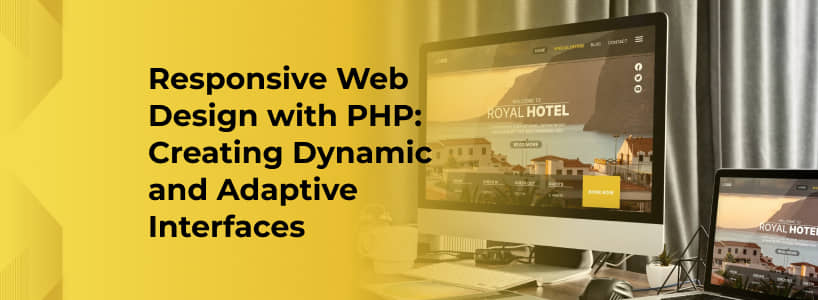Responsive Web Design (RWD) has become a cornerstone of modern web development, ensuring optimal viewing experiences across diverse devices. While CSS is the primary tool for achieving this, PHP plays a crucial role in creating dynamic and adaptive interfaces.
Understanding the Basics
At its core, RWD involves creating websites that automatically adjust their layout and content to fit different screen sizes. This is primarily achieved through CSS media queries, which apply specific styles based on device characteristics. However, PHP can enhance this process by providing dynamic content adjustments.
Leveraging PHP for Responsiveness
- Dynamic Content Generation: PHP can dynamically generate HTML content based on the detected device or user preferences. For instance, you can create simplified versions of pages for smaller screens, load different content modules, or adjust image sizes.
- Database Integration: PHP's ability to interact with databases allows you to store device-specific information or user preferences. This data can then be used to tailor content and layout accordingly.
- Server-Side Rendering (SSR): For complex websites, SSR can improve performance and SEO. PHP can render HTML on the server, making it easier for search engines to index content.
- Conditional Loading: PHP can be used to conditionally load scripts or stylesheets based on device capabilities. This helps optimize page load times and resource usage.
Practical Implementation
To implement RWD with PHP, follow these steps:
- Detect Device: Use PHP's $_SERVER array to access device information like user agent, screen resolution, and device type.
- Create Responsive Layout: Design a flexible HTML structure using CSS media queries to adapt to different screen sizes.
- Dynamic Content Adjustment: Use PHP to modify content based on device characteristics or user preferences. For example, you can display different menu options or content blocks on mobile devices.
- Optimize Images: PHP libraries can help resize and compress images for different screen sizes, improving performance.
- Testing and Refinement: Thoroughly test your website on various devices to ensure optimal display and functionality.
Keyword Integration
- Responsive Web Design: Emphasize the importance of creating websites that adapt to different screen sizes.
- PHP Framework: Highlight the benefits of using PHP frameworks like Laravel or Symfony for RWD development.
Conclusion
By combining the power of PHP with CSS media queries, you can create truly responsive websites that deliver exceptional user experiences across all devices. While CSS is the foundation, PHP adds the dynamic layer that makes your website truly adaptive and engaging.

